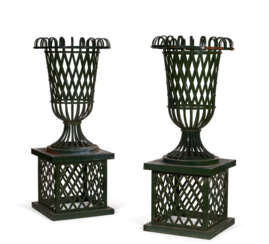garde

William Fraser Garden, born William Garden Fraser, is a British landscape painter of Scottish descent.
William was born into a large Fraser family where six of the seven boys became artists, so he changed his name to William Fraser Garden to distinguish himself from his brothers.
Garden was a master of watercolor technique, a perfectionist and an innovator. He was drawn to the silhouettes of trees in a winter landscape, their bare branches against the fading light. His landscapes are always highly detailed, scrupulously accurate and striking in color. Muted gray-blue tones, transparent light create a sense of inarticulate anxiety, and at the same time atmospheric lightness.
Despite the undoubted talent of an outstanding watercolorist of the 19th century, Garden did not achieve success during his lifetime and died almost in poverty. It was not until many years later that collectors appreciated his striking dusky watercolors.


William Fraser Garden, born William Garden Fraser, is a British landscape painter of Scottish descent.
William was born into a large Fraser family where six of the seven boys became artists, so he changed his name to William Fraser Garden to distinguish himself from his brothers.
Garden was a master of watercolor technique, a perfectionist and an innovator. He was drawn to the silhouettes of trees in a winter landscape, their bare branches against the fading light. His landscapes are always highly detailed, scrupulously accurate and striking in color. Muted gray-blue tones, transparent light create a sense of inarticulate anxiety, and at the same time atmospheric lightness.
Despite the undoubted talent of an outstanding watercolorist of the 19th century, Garden did not achieve success during his lifetime and died almost in poverty. It was not until many years later that collectors appreciated his striking dusky watercolors.


Max Clarenbach was a German painter of the first half of the twentieth century. He is known as a painter, landscape painter, genre painter and teacher and is considered one of the most important representatives of Rhenish painting of his time.
Max Clarenbach made study trips to Italy and Holland early in his career, where he formed his genre preferences and became a landscape painter. His work reflected the influence of the Hague School and the French Barbizonians. The artist skillfully depicted winter scenes and the nature of western Germany. He also painted sports and street scenes.
Clarenbach was one of the organizers of the Düsseldorf Sonderbund and taught at the Düsseldorf Academy of Art.













































































